While the pilot and other personnel do safety checks on Hawaii flights before flying up to six hours over-water between the US mainland and Hawaii, what role do passengers play? We received a comment that at first didn’t seem related to safety issues making global news, but now it might be right on target. Especially today, as Alaska Airlines’ CEO just announced that “We found ‘many’ loose bolts on our Max 9 planes following near-disaster.”
“We flew on a (Southwest) MAX (from Las Vegas to Kona)… Upon landing, we informed the pilots that there was a loose bolt sticking out of the port wing at cruising altitude, which retracted upon landing. They showed no interest until we showed them a photo that we took in flight —- then minimal interest. An airplane mechanic acquaintance assured me soon after that the single bolt in our photograph would not pose a risk to the aircraft even if it dislodged at cruising altitude. There would have to be several loose. Now I wonder how many bolts were actually loose on that plane. After watching Downfall on Netflix about the Boeing company, I doubt that I will choose to fly on a MAX again unless there is no other option.”
On another plane, an A330, a passenger noticed and reported four wing-fastening bolts were missing.
The Virgin Atlantic Airbus A330 flight was canceled just before takeoff. That happened when a passenger visually observed the absence of four fastening bolts on one of the widebody wing panels. It occurred last week when the passenger alerted a flight attendant. That then caused the airline to cancel the flight entirely as a precaution so that maintenance checks could be performed. Experts later clarified that the missing bolts were located on a non-critical secondary panel structure, which did not compromise the aircraft’s safety. Airbus engineers confirmed that the plane was still safe to fly,. The missing fasteners were, however, promptly replaced during the additional maintenance check.
These incidents come in the wake of heightened concern, especially on long overwater Hawaii flights.
That following the MAX 9 incident. The Alaska aircraft, which had previously been flying to and from Hawaii, was found to have four fastening bolts missing, and executed a safe emergency landing.
While the Southwest Hawaii flight issue, and that of this Virgin Atlantic A330, are not related to the MAX 9 and weren’t apparently related to safety concerns, it adds to the airline industry challenges that have characterized the start of 2024.
The above issues occurred on two aircraft from different manufacturers.
One was a Southwest Boeing 737 MAX 8, while the other was on a Virgin Atlantic Airbus A330. It makes us wonder whether safety issues are in fact, mostly related to issues at Boeing, or if they are industry-wide. What’s your take?
Boeing says it’s up to the suppliers to verify quality.
The company said last week that the matter of safety is “imperative” and that suppliers must meet quality requirements. Vendors must “Ensure that work instructions are mistake-proof and quality is continuously monitored – particularly torquing requirements.” But, is that occurring?
Get Breaking Hawaii Travel News


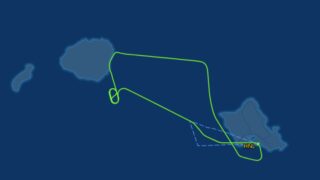
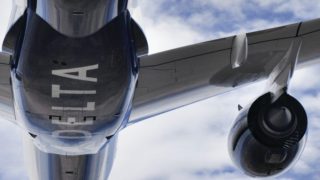
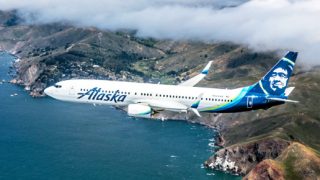
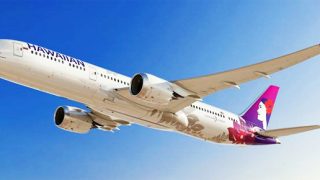
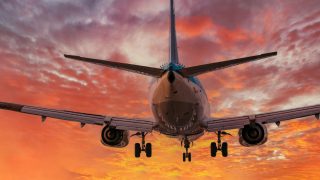
I think that there should be focus placed on where these planes are serviced. I have watched all of the media coverage on the door that blew off. No one has mentioned that the Airline Companies are shipping maintenance Offshore to save money. Mandatory maintenance is being done in various Asian countries by mechanics that can’t properly read the American Service Manuals.
Like so much of customer service calls we make. The calls go to foreign countries to save costs.
We really need to focus on this issue.
Aloha from Kau’ai
Hi Jon.
We’ve written about off-shore maintenance previously and concur it is worth checking on.
Aloha.
Should I says something? If it’s before a flight and If it’s missing bolts on the wing, then definitely Yes. If it’s missing bolts on the bathroom door, then No (may mention it to a FA after we land).
If it’s potential life threatening, why won’t you say something?
This is not straight forward. Yes, if a passenger sees something they think is wrong they should report it. However, Pax do not necessarily know what matters and what is normal. So we could end up with increased delays, cancelations and diversions required until what the pax saw is clarified. The crew after all do series of pre flight checks and a walk around but no one is infallible.
The second issue is one of liability. Do we want there to be a legal assumption that pax should report anything that concerns them? If so what is the liability in negligence if they do not or fail to see something?
If a pax reports an issue and the plane diverts and no fault is found, who is liable for the cost to the airline and the delay to pax?
My BIL is an experienced private pilot in the mountain west. He was a passenger on a commercial flight in winter weather that was sitting on the ground for de-icing; his side of the plane had not been de-iced when it began to taxi to the runway. He quickly told a flight attendant who said “Sir, they know what they are doing.” He had to stand up and say “If this side is not de-iced the plane cannot fly.”
So yes, if you see something say something.
Yes, absolutely, everyone should be vigilant If you see something, say something. Boeing has been stunning in it’s failures I was an airplane mechanic, inspector and toolmaker there for many years (1978-2015) They obviously aren’t up to the task anymore. Do not hold back.
Curious that Boeing says it’s up to the subcontractors to ensure their assemblies are safe. Boeing will have the primary liability if a plane goes down. Rather a cavalier attutude to passenger safet I must say.
Boeing’s stance reminds me of the sentiment in Belfast where the Titanic was built: the ship was in good shape when it left the shipyard here.
All airlines have the ability to place non critical items on either what we call MEL or CDL. A minimum equipment list (MEL) is typically applied to components whose inoperation will not cause a safety of flight issue (i.e. passenger seat, lavatory, etc). With ETOPS aircraft, there is less that can be placed on MEL due to the nature of the extended operations. A configuration deviation list (CDL) is a list, established by the aircraft manufacturer which identifies external parts of an aircraft type may be missing at the commencement of a flight, and which contains, where necessary, any information on associated operating limitations and performance correction (i.e. aerodynamic panels, screws on non critical panels, etc)
Yes, very good explanation of a manual but the question was around pax being aware. I think the authors taking a picture and talking to the pilots was very good.
That’s what I was answering. Passengers may report things to the flight crew which is then passed along to maintenance. The mechanics will inspect and, if time allows, fix the issue. If it is not a safety of flight issue, and it can be addressed when the aircraft is at a maintenance base with sufficient downtime that doesn’t affect operations, it gets placed on deferral as I mentioned.
It is in the pax interest to report anything they aren’t sure of. The safety chain is long and includes everyone.There are usually a number of events in a chain that causes a hazard not just one thing. Breaking the chain of events is critical.
Aren’t aircraft inspected between flights? If so, you’d think these issues would have been discovered during inspection.